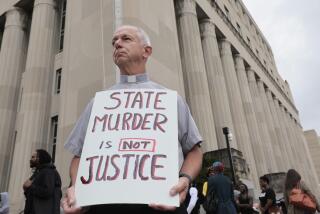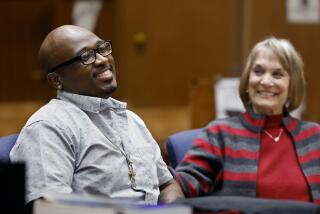How Mistakes Get Made
- Share via
NO ONE KNOWS FOR SURE HOW MANY wrongful convictions occur each year. In a recent survey by C. Ronald Huff, director of the criminal justice research center at Ohio State University, more than two-thirds of the lawyers, judges and law-enforcement officials asked said they believed that the error rate for convictions is less than 1%. A mistake rate even that high would result in 6,000 wrongful felony convictions a year in the United States.
Francis J. Friel, a former Philadelphia police captain who helped James McCloskey win freedom for Matthew Connor, also saved another wrongfully convicted man from Death Row. Until recently, Friel headed Philadelphia’s organized-crime homicide squad, and although he says he has never known a detective to frame someone, Friel says that the severity and frequency of big-city crime can take a toll on some detectives’ objectivity.
“You can’t imagine the cheapness of life until you’ve experienced it in a homicide squad,” says Friel, now the police chief in Bensalem, Penn. “The only time the phone rings is when someone’s been murdered. . . . You get overwhelmed by hopelessness, steeped in blood.
“The supervisor wants your report in. There’s pressure from the victim’s family. You’re working for 36 hours straight. It becomes a challenge to prevail--a good guy versus bad guy thing.
“Somebody will tell you, ‘I saw it happen, but I’m not testifying. I have to live here.’ You get evidence that supports a preconceived theory. When you see shortcomings, you hedge. The mentality and the pressure are to not let the guilty guy go free. You block out anything that doesn’t fit.
“Most of the time there is no conclusive physical evidence. Detectives have to weigh what people tell them. You go lower and lower on the chain of credibility looking for witnesses. You feel you have no obligation to bring up evidence pointing to others. Why cloud the issue?”
More to Read
Sign up for Essential California
The most important California stories and recommendations in your inbox every morning.
You may occasionally receive promotional content from the Los Angeles Times.













